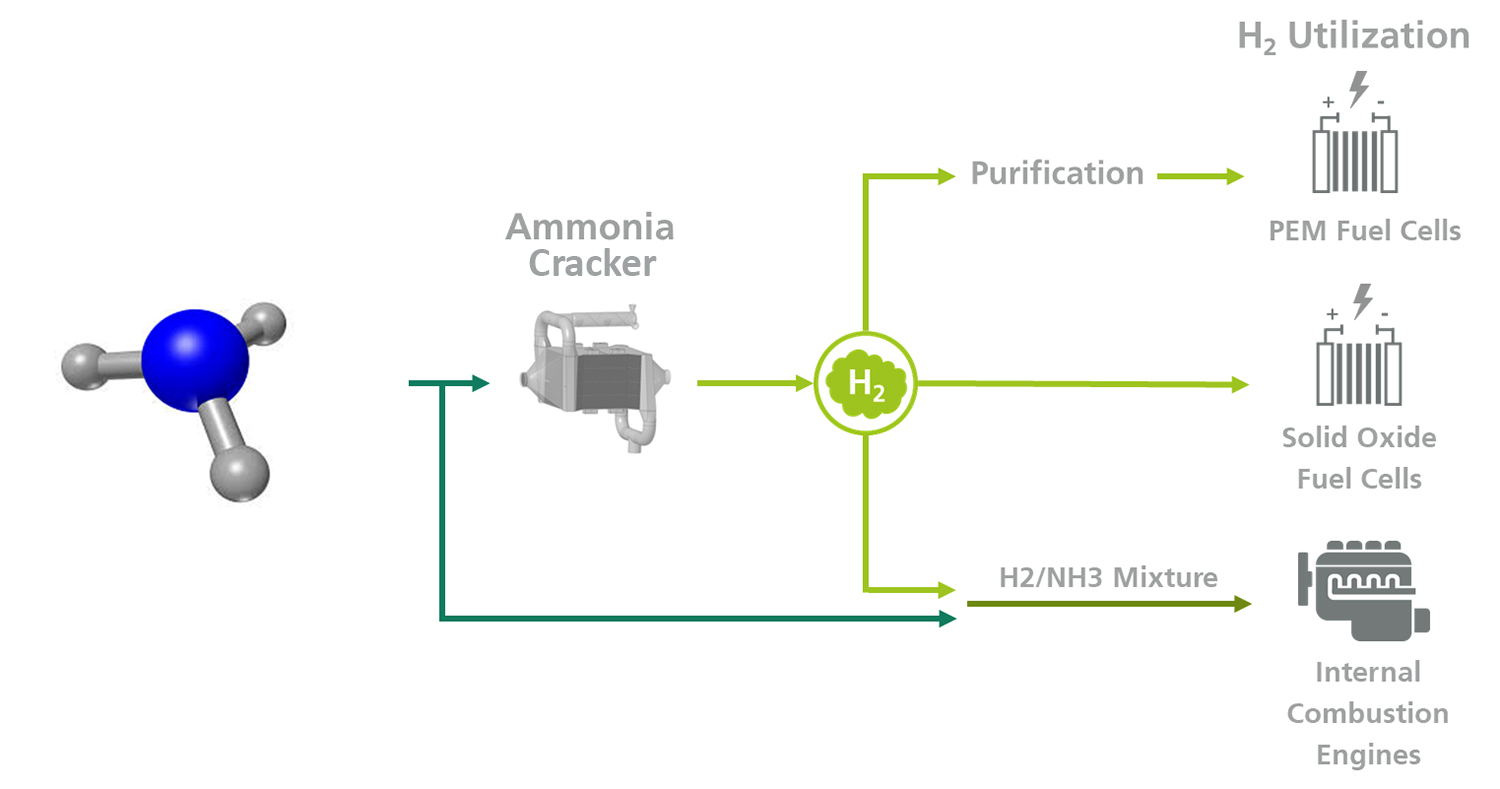Why don’t use hydrogen directly?
As the smallest and lightest element in the periodic table, hydrogen has a very low volumetric density, which makes its transportation and storage inefficient. For this reason, hydrogen is initially transported by other materials and is produced by the cracking process.
How can ammonia help?
Ammonia can be produced from green hydrogen and split into hydrogen and nitrogen without CO2 emissions. If ammonia is liquefied under moderate pressure, it contains more hydrogen per cubic meter than liquid hydrogen. Therefore, the storage and transportation of hydrogen in the form of ammonia are a significant advantages in terms of its higher volumetric energy density. Another advantage is ammonia can also be used directly in combustion engines or turbines. In the future, ammonia could replace conventional fuels such as heavy fuel oil in shipping and contribute to reducing emissions.
Isn't ammonia dangerous?
AAmmonia is toxic and flammable. As a result, it is classified as a hazardous substance and is only permitted under safety regulations. Despite these regulations, the use of ammonia is worthwhile. Thanks to its availability and climate neutrality, over 25 million tons are transported safely by ship and rail worldwide every year and are used in industry.
 Fraunhofer Institute for Microengineering and Microsystems IMM
Fraunhofer Institute for Microengineering and Microsystems IMM
